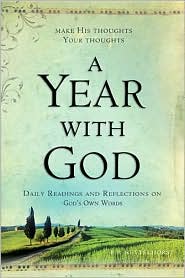The good old days, when hurricanes came without warning because, without satellites, no one could see them building in the Atlantic weeks ahead of time. The good old days when the news from across the country took a week to get to us, when communicating with a loved one meant waiting weeks for a letter. Ah, the good old days when people spent three weeks crossing the Atlantic at the mercy of winds in a tiny boat. The memories! When life expectancy was but 45, and 40 percent of children died before their fifth birthday.
The good old days when instead of worrying about obesity people worried about famines and starving to death. The good old days, when doctors did more harm than good. The good old days?
The Good Old Days—They Were Terrible is an interesting book written by Otto L. Bettman. Originally published in 1974 by Random House it is still available today. In it, he describes the way things really were in the relatively recent past. Given how much criticism is commonly thrown at schools today, it is intriguing to discover what Bettman has discovered about schools of the past. In his book he writes, “Criticism of the public school system…usually takes the form of nostalgia for its ‘Golden Age,’ the days of the Little Red Schoolhouse. Here, it is believed, was the wellspring of the nation’s greatness, where the three R’s were taught in an atmosphere of patriotism and simple virtue, where individualism was sanctified….In a time of widespread educational hysteria it is a vision hard to resist; however, it is not an accurate one.”
He reports, in contrast to the rose-colored memories:
“…the teacher was more warder than instructor, his routine being more physical than intellectual. Some school boards in selecting a new teacher made it a rule to pick a strong fellow—especially on the frontier, where, according to Hamlin Garland, ‘baseness and vulgarity’ prevailed among the older boys. Biting, eye-gouging and slug scuffle matches were favorite sports, but boys saved their most barbaric excesses for strangers….a Miss Barstow, taught public school in Canton, Mass. On October 8, 1870, the young woman, said to be in feeble health, punished four boys for unruly conduct by shutting them in the school building after class was out. Finally, when she released them, Miss Barstow is said to have given the boys ‘a slight reprimand.’ Their response was immediate; they stoned her to death.”
Bettman demonstrates that the extent of education in the not so distant past was remarkably poor. He relates that in 1890 barely twenty percent of all African-American children received any education at all, and that education, for those twenty percent who were lucky enough to get it, amounted on average to about 100 days worth of instruction. One might be tempted to imagine that such poor education was something only minorities suffered from in the past. Not at all. City schools, according to Bettman, were routinely plundered by political bosses, who packed school boards with their own cronies. The result was schools that were overcrowded and under funded, where many teachers were doing well just to maintain order. The New York commissioner of education admitted in 1871 that “thousands of children leave school without being able to read or write.” And the percentages of those who even went to school to begin with was not high, especially among the poor and immigrant groups, who, despite compulsory education laws, tended to keep their children at home so they could work.
Bettman demonstrates that many of the problems facing the world today—education being just one of his examples— are problems that it has faced all along. In many, many respects, conditions are either unchanged or actually considerably better today than they were in the supposed “good old days.”
In the Los Angeles Times I’ve read opinion pieces, as well as seen reviews for books, such as We Are Now Beginning Our Descent, by James Meek, which argue that the West, and America in particular, are in their twilight years and face inevitable decline. What startles me in such pieces is the remarkable historical amnesia, since the chattering classes were saying much the same thing in the years between the first and second World Wars. Otto Spengler, a German scholar, had quite a hit on his hands when he wrote his book, The Decline of the West, published in two volumes in 1926 and 1928.
Remarkably, the West somehow managed to not just survive Spengler’s critique, depression, world war, and a cold war, but to prosper and even expand its influence, much to the disappointment of pessimists everywhere. Given the pattern of history, I’m always puzzled by those who imagine that the world is getting worse and worse, or predict the worst possible outcomes. But then most people don’t pay much attention to history.






No comments:
Post a Comment